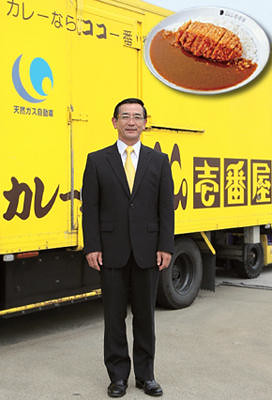The Secret Behind the Success of Coco Ichibanya Curry
In a recent interview, the owner of Coco Ichibanya Curry was asked about the success of his shop in light of the closing of all Wendy’s franchises in Japan.
First I’ll introduce Coco Ichibanya to those of you who are unfamiliar, or who live in Japan but have never ventured inside. Some of them look something like a dive from the outside, but they are one of the most family-friendly restaurants in Japan (going so far as to provide little child seats to put on the toilets, crayons for the kids to use during the short wait for the food to arrive, and the options of little toys or snacks as a dessert after dinner).
They always have an English language menu ready, but the Japanese menu has plenty of pictures as well. A pitcher of water is placed on the table so you never have to wait to quench your thirst.
If you are in Japan with an empty stomach and looking to get that stomach filled with some hot and relatively spicy goodness, Coco Ichibanya is a great place to go.
It’s Japanese curry, which means that if you are a fan of Indian food, you may like it, but you also may not. Most of the toppings are deep-fried, although the menu is quite extensive and includes a wide enough variety for almost any group of people… provided, of course, everyone likes curry and rice.
You can also order your curry however you like it choosing the amount of rice, the specific mix of toppings you want, the level of spiciness of the sauce, and although it doesn’t say it explicitly on the menu, you can ask for extra curry sauce (especially useful for people who prefer extra rice and just want to increase the overall volume of their order).
 As to the secret behind the success, founder Tokuji Munetsugu (pictured) has some advice.
As to the secret behind the success, founder Tokuji Munetsugu (pictured) has some advice.
He tells restaurant owners not to worry about the competition, but to look at your restaurant through your own eyes, look at your customers, and make sure your shop lives up to your own standards. He claims not to be concerned about shops offering 300 yen bentos, but to make sure he keeps connected with what his customers want.
Munetsugu explains that they are not necessarily inexpensive, nor are they trying to create some kind of unique product. They keep the plates heated, and rather than dump curry from a big overheated pot, the keep their curry warm and then heat it up in a small individual pot for each customer that comes in. He likens this to a Japanese cafe keeping customer’s cups warm and then making them a cup of coffee on the spot instead of refilling it from a big pot of coffee which stays heated and gradually loses its flavor while sitting on a warmer.
He also wants to make sure that even customers that order the pork cutlet or other toppings that take time don’t feel forgotten in the lunchtime rush by announcing out loud that you are making “the cutlet for the guest at the counter”, or making sure to serve customers in the order in which they placed their orders. If an order is taking a little time, he would ask out loud about how a customer’s order is coming. Hearing that makes customers feel that they are important and that they haven’t been forgotten.
In a nutshell he says that the key to success are to listen to your customers and put them first, don’t worry about the competition, and just keep your shop up to your own high standards. If a customer has a problem or complaint, most of them will respond to you if you reach out, show concern, and try to make things right.
The last thing he says is that if you want a successful business, you don’t need friends and hobbies. His final word of advice for young businessmen and people that want to be successful is to wake up early and clean your workspace every morning, and to never be late or take a day off. In fact, to work even harder on the days you feel tired or sick.
I think the secret is that it is literally the food version of crack…haha! I love this stuff and all the little things they do that make eating their terrific.
Thanks for the comment, jay. The day it went from food to crack for me was the first day I got take-out. The perfectly designed plastic bowls with little sections for the Indian pickles, the rice, the sauce, and the indentation on the top for the spoon… It’s like they have some little genius designers for hire.
Thanks for the comment, Peter! My family had Coco Ichbanya Curry on Christmas instead of KFC, so how’s that for dedication!
I’ve heard rumors that Coco Ichibanya was thinking of extending its presence in the United States beyond just Hawaii. I just hope they keep it like it is and not try to make it some kind of “Japanese cuisine experience”.